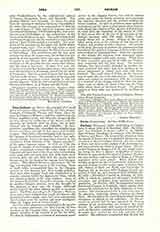

Peba Indians (OR PEVA), the principal of a small group of cognate tribes, comprising the Peba proper, Caumari, Cauhuachi, Pacaya, and Yagua (Zava by error in Chantre y Herrera), together constituting the Peban linguistic stock, and formerly occupying the country about the confluence of the Javari with the Amazon, in territory held by Peru, but in part claimed also by Ecuador and Colombia. In their primitive condition they resembled the neighboring Jivaro and Pano; though of less fierce and warlike temper. They held a close friendship with the powerful Omagua of Southern Colombia, and in the eighteenth century formed an important element in the celebrated Jesuit missions of the “Mainas province” of the upper Amazon region. In 1735 (or 1736) the Jesuit Fr. Singler of the Omagua mission with a few Indian companions reached the main village of the Caumari and later that of the Peba, who received him with good will and presented him with their most precious gifts, viz. jars filled with the deadly curari poison used by the hunters for tipping their blowgun arrows. They allowed him to set up a cross in the village and listened with respect to his teaching. Some of both tribes accompanied him to the Omagua mission of San Joaquin, but, their health suffering, they were soon brought back and established in a separate mission called San Ignacio de Pebas, which was placed in charge of Fr. Adan Vidman. Some of the kindred Cauhuachi (Covachi), formerly attached to another Omagua mission, were also brought to San Ignacio, as were later the Yagua. Although nearly related, the tribes differed greatly in temperament. The Peba, according to Fr. Chantre y Herrera, were active and vigorous but rough in manner; the Cauhuachi were equally rude, but more industrious; the Caumari were the neatest and most intelligent; while the Yagua were of restless habit.
In 1754, tribal dissensions culminated in the murder of the resident missionary, Fr. Jose Casado, by two brothers of the Caumari tribe, resulting in the temporary desertion of the mission of all but the Peba. Fr. Jose de Vahamonde, a veteran of seventeen years’service in the Amazon forests, was sent to restore order, and under his kindly promises and treatment the fugitives returned and the mission doubled its former number. In spite of smallpox, other epidemic visitations, and the raids of Portuguese slave hunters from Brazil, the mission of San Ignacio de Pebas held its rank until the expulsion of the Jesuits in 1768. It then stood fifth in the list of 33 missions of the Mainas province, with 700 souls, Father Vahamonde being still in charge. Others of the same tribal group were at the mission of San Ignacio de Mainas, and possibly at other missions. On account of the great diversity of dialects the missionaries had introduced the Quichua language of Peru as the common medium of communication. After the expulsion of the Jesuits the missions were continued under Franciscan auspices with some success. When Peru became a separate government in 1821, the missions were neglected and fell into decay. The mission Indians, who had steadily dwindled in number, became scattered and either lost their identity in the mixed population or joined their still wild forest kindred. The small town of Pebas, on the Amazon, now occupies the site of the old mission. The former tribes are extinct or assimilated, with the exception of a remnant of the Yagua, noted for their fine physique, some of whom are about Pebas and the Napo while others dwell on the lower Javari. The greater portion of their tribe was destroyed by smallpox in 1877.
JAMES MOONEY

